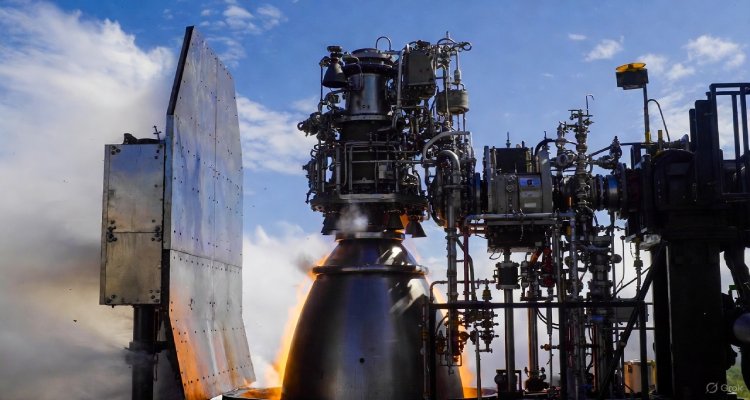ISRO Completes Key Restart Test on CE20 Cryogenic Engine
ISRO successfully demonstrates a key restart capability on the CE20 cryogenic engine, boosting the flexibility of future LVM3 missions and advancing India’s deep-space ambitions.
Introduction: A Milestone Ignition at the Edge of Space
When the CE20 cryogenic engine lit up inside a vacuum chamber in the hills of Tamil Nadu this week, it wasn’t just another test—it was a breakthrough that could redefine the future of Indian space missions. In a crucial step toward more flexible and complex spaceflight, the Indian Space Research Organisation (ISRO) successfully demonstrated the boot-strap mode start of its CE20 cryogenic engine, marking a major advancement in India’s upper-stage propulsion capabilities.
Conducted for 10 seconds at the High-Altitude Test (HAT) facility in Mahendragiri, the experiment showcased a new way of igniting an engine in space—without relying on external start-up assistance. For a country preparing for human spaceflight, deep-space probes, and multi-orbit satellite deployments, this single ignition carries long-term consequences.
Context & Background: The CE20 Engine and India’s Heavy-Lift Ambitions
The CE20 cryogenic engine is the powerhouse of the LVM3, India’s heaviest and most reliable launch vehicle. It fuels many of ISRO’s most ambitious missions, including Chandrayaan-2, Chandrayaan-3, and upcoming Gaganyaan human spaceflight tests.
Traditionally, the CE20 operates at thrust levels between 19 and 22 tonnes and is currently certified for single-start missions. This makes it perfectly suited for high-energy deployments but limits flexibility in complex space scenarios. Future missions—especially those involving interplanetary travel, multiple satellite injections, or precise orbital maneuvers—will require multiple in-flight restarts.
Until now, such restarts depended on additional gas bottles and auxiliary systems, which increased weight and reduced payload capacity. The recent boot-strap start test aims to eliminate these constraints.
Main Developments: How ISRO Achieved the Boot-Strap Mode Start
The boot-strap mode ignition is a process where the engine reaches steady operation without any external start-up mechanism. Instead, internal engine dynamics create a self-sustaining ignition sequence—an engineering challenge that demands precise timing, reliable ignition systems, and controlled fluid dynamics.
ISRO’s test introduced several new elements:
Multi-Element Igniter Technology
Engineers used multi-element igniters in both the thrust chamber and the gas generator. This dual-ignition scheme ensured stable flame initiation in low-pressure, vacuum-simulated conditions.
Tank Head Pressure–Based Ignition
Instead of relying on stored gas bottles, the thrust chamber was ignited using tank head pressure—the natural pressure exerted by the cryogenic propellants themselves.
Gas Generator Ignition Without Auxiliary Systems
Once the chamber ignited, the gas generator was fired, again using tank head conditions.
Turbopump Self-Start
The turbopumps—vital components that feed super-cold fuel and oxidizer into the combustion chamber—were started without external gas support.
The outcome was a fully autonomous ignition sequence: the engine started, stabilized, and reached steady-state thrust—all without any auxiliary system.
ISRO officially described it as a “successful demonstration of boot-strap mode starting of a gas-generator cycle cryogenic engine.”
Expert Insight & Public Reaction
Aerospace engineers view this milestone as a leap toward modern propulsion autonomy.
Dr. A. Sharma, a propulsion analyst based in Bengaluru, notes:
“Restart capability is no longer optional for advanced missions. With this achievement, ISRO is positioning itself alongside global leaders like NASA and ESA in cryogenic engine innovation.”
Former ISRO scientists also praised the accomplishment, calling it a “quiet revolution” in upper-stage engine design.
Public response, especially among India’s growing space-enthusiast community, has been overwhelmingly positive. Social media conversations highlighted national pride, with users emphasizing how such developments strengthen India’s position in global space exploration.
Impact & Implications: A More Capable LVM3 for Future Missions
The successful test opens new pathways for ISRO’s medium- and long-term mission plans:
Multi-Orbit Missions Become Easier
Satellite constellations, deep-space probes, and space-based observatories often require precise injections into multiple orbits. A restartable CE20 makes these missions more efficient.
Higher Payload Capacity
Removing external start-up systems means more room for scientific instruments or satellite mass.
Critical for Interplanetary Missions
Future Mars, Venus, and lunar missions will rely on flexible, restart-capable engines.
Enhancing India’s Human Spaceflight Program
Gaganyaan missions may depend on multi-burn profiles for safe crew module deployment and recovery operations.
Strategic Advantage
A more advanced LVM3 strengthens India’s standing in the commercial launch market, where precision and flexibility are highly valued.
ISRO’s next steps are expected to include longer-duration tests, multiple restarts under varying conditions, and ultimately integrating the restart-ready CE20 into flight missions.
Conclusion: A Quiet Test, A Giant Step
In the controlled vacuum of Mahendragiri’s HAT facility, a 10-second ignition demonstrated far more than flame and thrust—it showcased India’s expanding technological confidence. As space missions become more complex, ISRO’s ability to adapt its engines for multiple restarts will define the sophistication of its future programs.
This milestone signals not just technical progress, but the readiness of India’s space program to compete globally in a new era of space exploration.
Disclaimer: This article is a journalistic reimagining based solely on the provided headline and bullet points. It does not include additional reporting and should not be considered an official ISRO communication.











